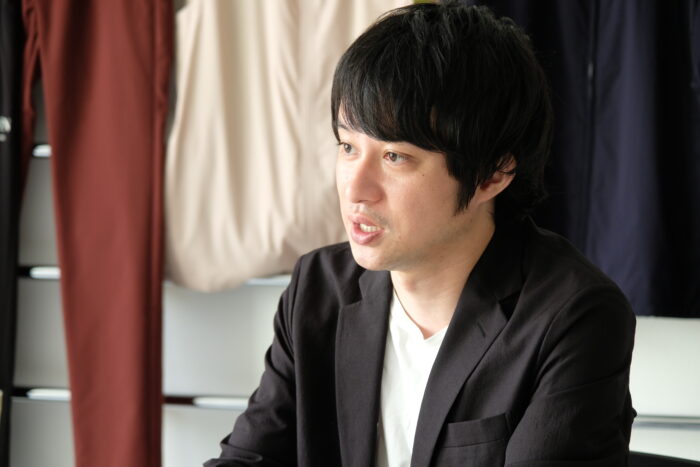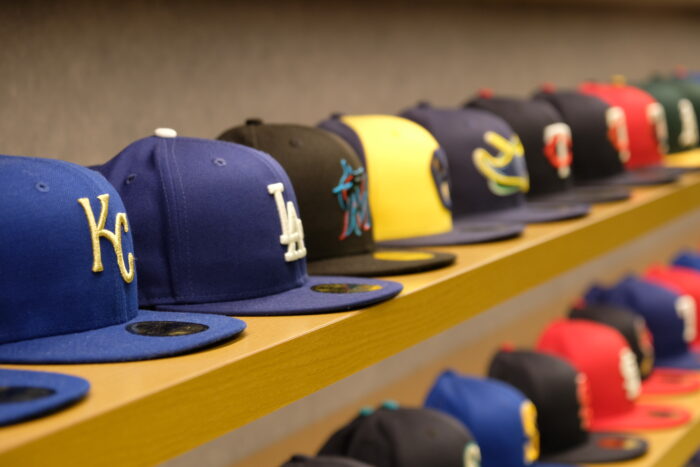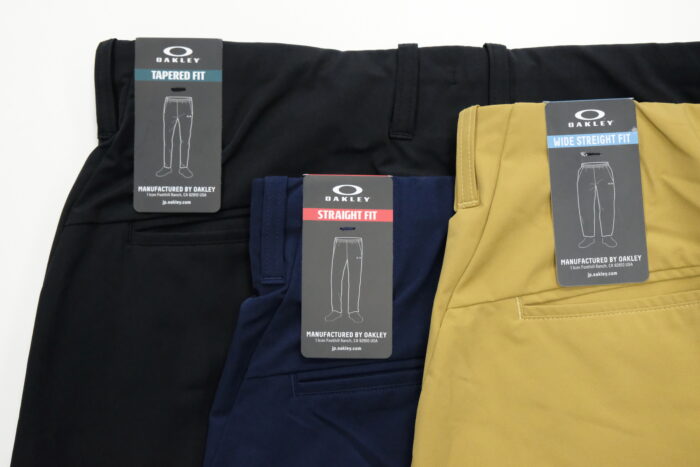SOLOTEXT
Why was Mr. Kozaburo Akasaka, the designer of Kozaburo, fascinated by SOLOTEX®?
Kozaburo as a brand has been continuously drawn attention from fashionistas for its world view that was inspired by the excitement of street fashion and the influence of a subculture since the brand won the LVMH Prize in 2017 when it started in full swing.
In the Rakuten Fashion Week Tokyo held last autumn, where the brand showed its look for the spring-summer season of 2020, it made a strong impact in the fashion world with the runway reproducing the dry landscape garden (Karesansui) and the performance of Japanese drums, as well as items that made full use of a variety of different materials while presenting many oriental elements.
Those items used traditional materials, such as needlework called Sashiko, denim dyed with indigo, and net used for a mosquito bed net, as well as SOLOTEX® from Teijin Frontier. We asked the designer Kozaburo Akasaka about the intention and the concept behind the brand’s look for the spring-summer season of 2020.
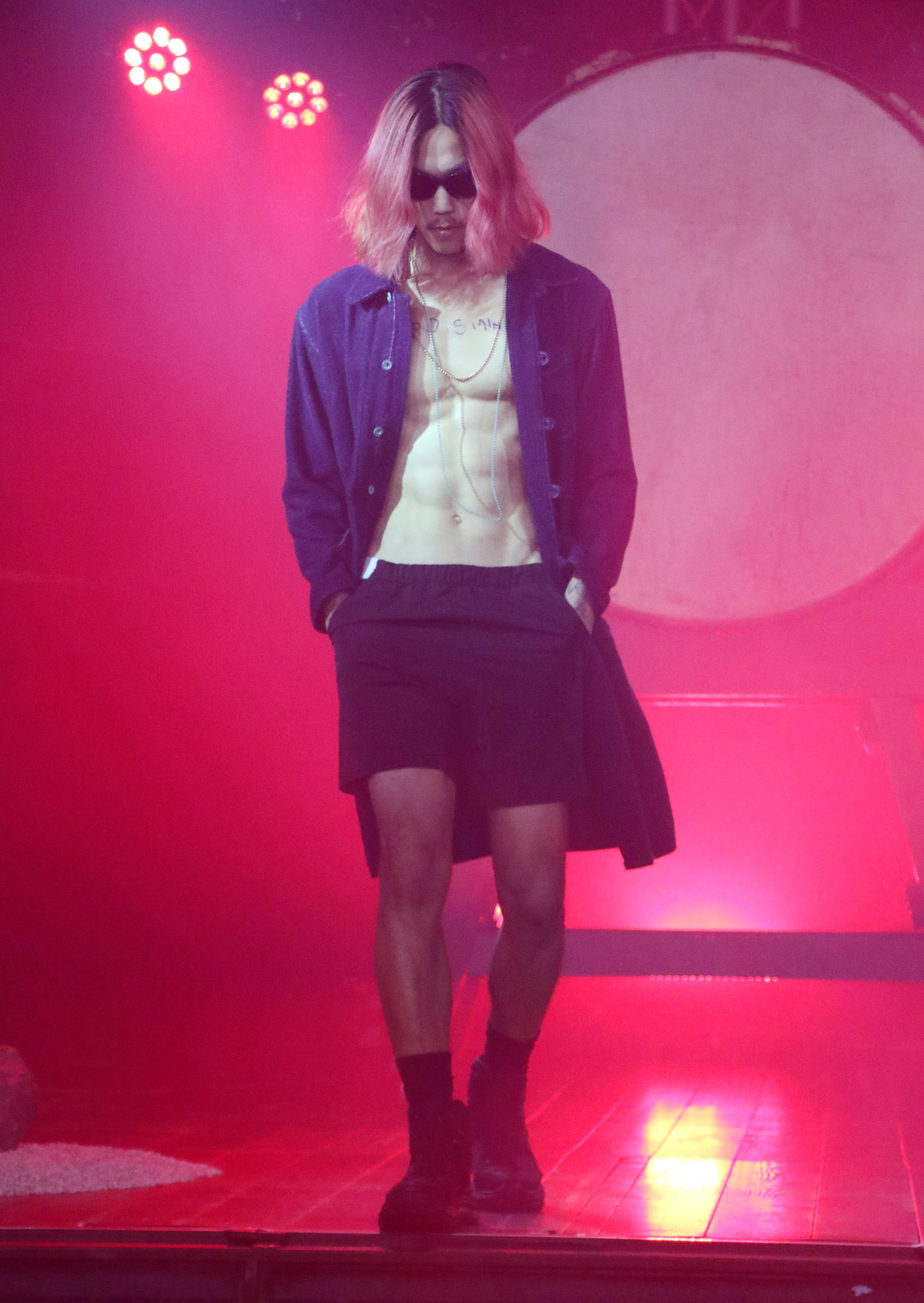
At Rakuten Fashion Week Tokyo where you displayed the collection for the spring-summer season of 2020, you made a very strong impact. Now, what is the concept of Kozaburo for this season?
The theme of the collection for the spring-summer season of 2020 is “Land of the Setting Sun.” Inspired by American artists who actively produced works between the 1960s and the 1970s using the earth itself as the media for expression, such as Michael Heizer, Robert Smithson, and Harvey Fite, I imagined a universal utopia. The items of the collection focus on repeating the reinterpretation of the classics while starting from clothes for landscape artists.
At the same time, I also had the image for this collection as the culmination of the idea that “I would create a personally ideal wardrobe,” which I had worked on since 2017. I think the image may be based on the culture I experienced between the 1980s and the 1990s, including music and films, and ideal images of men derived from that.
Since my first show at Tokyo Fashion Week as a brand based in New York, I put on this show considering how to present it, referring to the scenes from Kill Bill directed by Quentin Tarantino and Kyoki no Sakura (cherry blossom of madness) directed by Kenji Sonoda so that the audience could see my background.
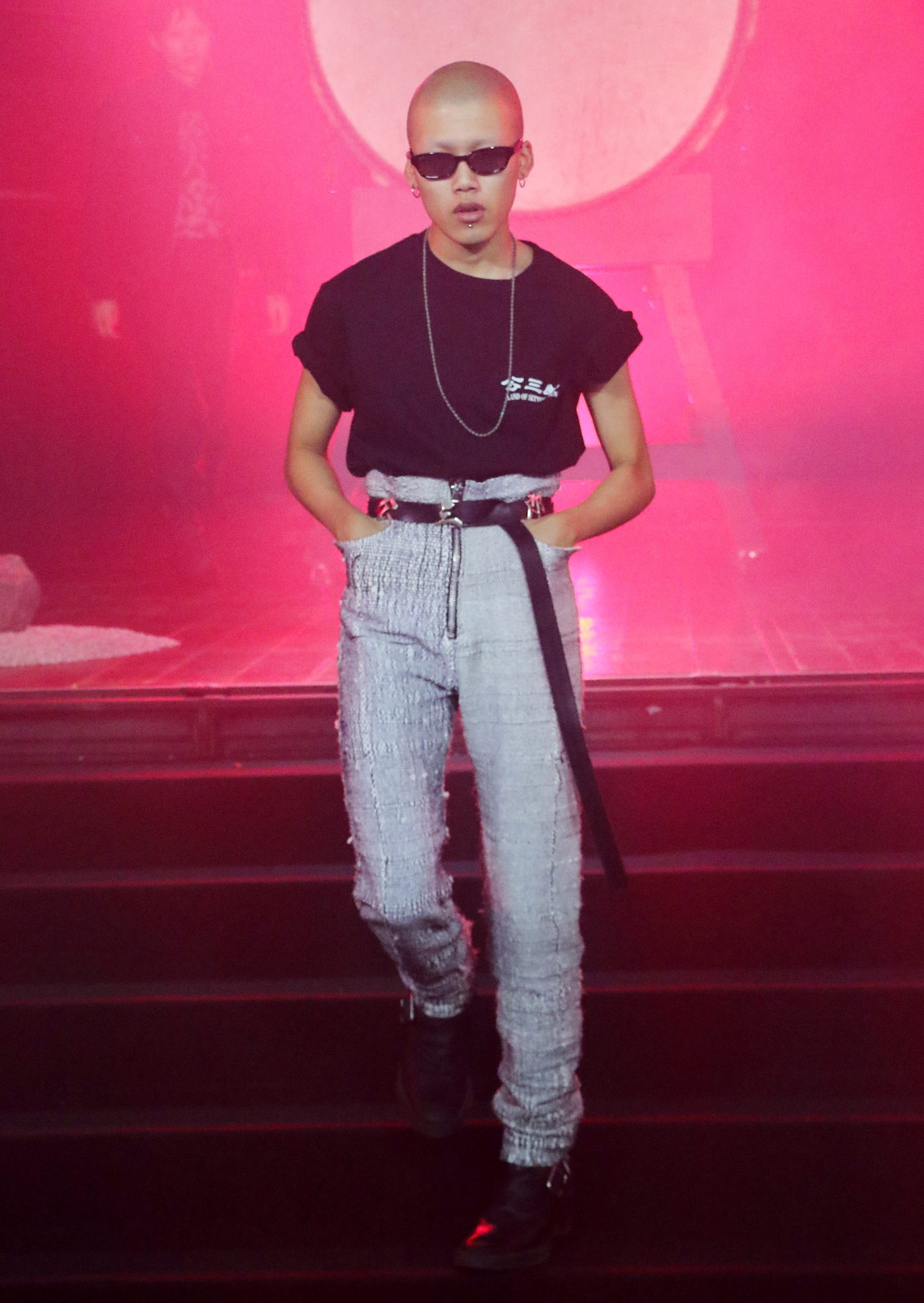
There are many details that make us feel Japan or Asia, including kanji characters and a silhouette like a judo uniform.
I believe that what I create by selecting what I consider a virtue from Japan’s unique culture and materials would have universal appeal across borders. In this collection, the traditional materials of canvas, denim and jacquard using Sashiko cotton and recycled cotton, waffle fabric dyed with indigo, and leno-woven net used for a mosquito bed net are used.
On the other hand, sustainable fabric using SOLOTEX®, which was newly developed together with Teijin Frontier, is also incorporated into really Kozaburo-specific wardrobe, including the single-breasted jacket, a dojo tracksuit, and jogging shorts.

We saw many denim items with a long-established reputation in the show.
The 3D boot-cut model, which is the brand’s signature model, and a newly released stone-washed straight-cut model called Rodeo were presented. A lightweight suck suit or a work jacket with antique copper buttons was combined.
At Rakuten Fashion Week Tokyo, the Asian models who put on the fashion representing your theme highlighted the appeal of the brand Kozaburo.
Since the show was held in my home city of Tokyo, I felt I wanted to create something that I could do only on this occasion, so I had my friends in Japan and the followers of Kozaburo come on stage at the show.
I sublimated this brand by responding to the individuals who wore our apparel and environment while retaining the core of the brand; at the same time, I gained valuable experience through which I had personal contact with many talents in Tokyo.

Since your debut, we have consistently felt there was something of a rogue in the clothes of Kozaburo. Why are you attracted to such an idea or why do you use such a motif in your creations? Do you have any thoughts about it?
There is a philosophy called “Breaking” in American hip-hop culture. Since it is said that breaking is required for creation, I feel that breaking barriers and stereotypes to create something is the essence of creators. Such a culture inevitably contains minorities and a roguishness, and I think I am attracted to that.
We feel Kozaburo’s clothes are greatly influenced by culture. Please tell us someone that you could call an eternal hero.
If I had to name only one person, it would be Neil Young. If I had to give more, it might take time, so maybe some other time. Please listen to his music first.

When creating clothes, what criteria does Kozaburo use to select materials?
I select materials for long wear, enjoying secular change and feeling universality in novelty.
You selected SOLOTEX® in terms of long wear, right?
Recently, perspectives of sustainability, organicity, and ecology have attracted attention. Unfortunately, such perspectives seem to encourage spending in some situations. I think one of the main root causes of this problem may lie in the wasting of clothes and materials. So, I feel that the idea of wearing quality items for a long time and the sense of mottainai (what a waste!), which have been considered to be a virtue since ancient times in Japan, would be required to solve this problem.
SOLOTEX® has remarkable sensory properties of smoothness, natural stretchiness, cushioning, and chromogenic properties while having the ability to blend other recycled fibers, great shape retention, and durability to enable long wear. Since I thought that those properties might be one of the solutions for that problem, I decided to use the material this time.
Please tell us about materials you would like to use.
It is maybe a 100% recycled comfortable material that causes no damage to the environment during the production processes. Furthermore, it is better if such a material were produced in a good working environment.

Please let us know what motivates you to make clothes and what you want to say.
Currently, the invisible fear of COVID-19 fills the world, and we are forced to accept changes. Even under those circumstances, I would be happy if I could continue to engage in creations that could provide a faint hope, pleasure, and an opportunity to think about advances for many years to come.
Profile
Kozaburo Akasaka. Born in Tokyo in 1984. After studying philosophy in Japan, he completed the BA Fashion course at Central Saint Martins in 2011 and the MFA program of Persons in 2016. After that, he established his own brand Kozaburo, and won a special LVMH Prize in 2017. He is currently active in Brooklyn, New York.


